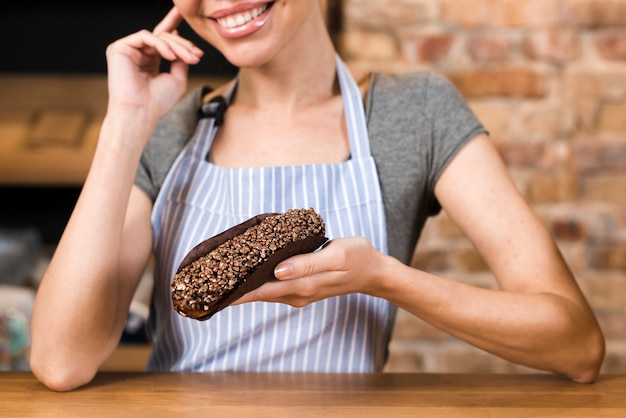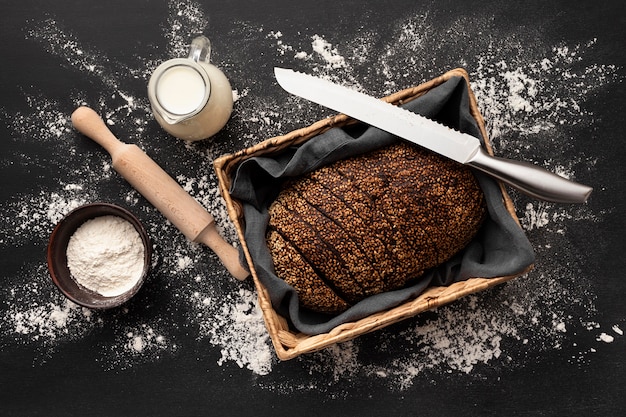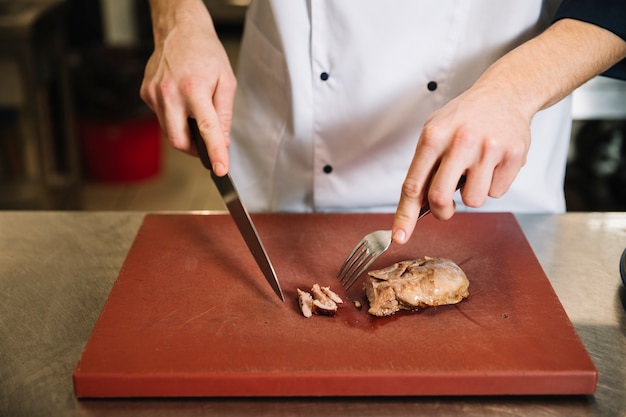Ah, meatloaf. The aroma alone is enough to transport you back to childhood memories of warm, home-cooked meals. My grandma’s meatloaf, with its perfectly browned crust and melt-in-your-mouth interior, was pure magic. Today, I want to share that magic with you, with a focus on getting that perfect 2-pound meatloaf – a size that’s generous enough for a family gathering or a cozy weekend meal. But, first things first, how long does it take to cook this meaty masterpiece?
(Part 1) The Importance of cooking time: More Than Just a Number

Cooking time for a meatloaf is more than just a number on a recipe card. It’s the difference between a perfectly cooked, juicy loaf and one that’s dry and disappointing. A meatloaf needs to be cooked long enough to ensure the center reaches a safe temperature, but not so long that it ends up resembling a brick. It’s a bit of a balancing act, right?
Factors Influencing Cooking Time: A Deeper Dive
Let’s break down the key factors that affect how long your meatloaf needs to simmer in the oven:
- meatloaf size: This one’s pretty straightforward. A larger meatloaf requires more time to cook through. Think of it like baking a cake – you wouldn’t cook a mini cake for the same amount of time as a full-size cake, would you?
- Oven Temperature: Higher temperatures mean faster cooking, but also a higher risk of burning the outside before the center is cooked. Aim for a moderate heat that allows the meatloaf to cook evenly without scorching. This is where knowing your oven well comes in handy. You’ll learn to adjust cooking times based on your oven’s quirks.
- Meatloaf Density: The denser the meatloaf, the longer it takes for the heat to reach the center. If you’re a fan of a tightly packed loaf, be prepared to add a few extra minutes to the cooking time. This is where practice comes in, you’ll learn to judge the consistency just by looking at it!
- Ingredients: The ingredients you use can also affect cooking time. Adding things like breadcrumbs, vegetables, or even a generous amount of cheese can add moisture and potentially increase the cooking time a little. It’s all about knowing your ingredients and how they behave in the oven.
(Part 2) Knowing When It's Done: Beyond the Visual Cue

So, your meatloaf is nestled in the oven, the tantalizing aroma filling the air. But how do you know when it’s ready? The visual test – looking for a golden-brown crust and a firm texture – is a good starting point, but it’s not foolproof. To be absolutely sure, you need to rely on a trusty thermometer and a bit of experience.
Checking with a Thermometer: The Gold Standard
A meat thermometer is your best friend when it comes to meatloaf. It’s the most accurate way to guarantee the center has reached a safe internal temperature of 160°F (71°C). This ensures the meat is cooked through, killing any harmful bacteria. food safety is important, and a thermometer takes the guesswork out of it.
The Visual Test: A Helpful, But Not Perfect, Guide
If you’re not a thermometer person, the visual test can give you a good idea of doneness. Look for a nicely browned crust and a firm texture. If you press gently on the meatloaf, it should spring back, indicating it’s cooked through. Also, if you insert a knife into the center and it comes out clean, you’re likely in good shape. However, remember, this method is more subjective and doesn't guarantee the internal temperature is safe.
(Part 3) The Ideal Cooking Time for a 2-Pound Meatloaf: A Starting Point

Now, let’s get down to brass tacks. For a 2-pound meatloaf, cooked at 350°F (175°C), you can expect a baking time of roughly 1 hour and 15 minutes to 1 hour and 30 minutes. However, this is just a guideline. Remember, every oven is different, and your meatloaf’s density can also affect cooking time. It’s crucial to always check the internal temperature with a thermometer to ensure it’s reached that safe 160°F (71°C). Don’t be afraid to adjust the cooking time if needed, even adding a few extra minutes if your oven runs a bit cool.
Tips for Getting the Timing Right: Mastering the Oven
Here are some additional tips to help you nail that perfect cooking time for your meatloaf:
- Preheat the oven: This might sound obvious, but it’s crucial for even cooking. A preheated oven ensures the heat is distributed evenly throughout the oven, preventing cold spots that can lead to unevenly cooked meatloaf.
- Don’t overcrowd the oven: Give your meatloaf some breathing room. If you’re baking other dishes, make sure there’s ample space around the meatloaf so the heat can circulate properly. You want it to cook evenly on all sides.
- Cover the meatloaf: In the first 30 minutes of cooking, cover the meatloaf with foil. This helps trap moisture and prevents the top from drying out, especially important for a larger loaf. It's a little trick to ensure a more tender and juicy final product.
- Don’t overcook: Keep a close eye on your meatloaf, especially towards the end of the cooking time. Overcooked meatloaf can become dry and tough, which is the opposite of what we want. Remember, it’s better to err on the side of slightly undercooked than overcooked. You can always add a few more minutes if needed, but it's harder to salvage a dry meatloaf.
(Part 4) My Signature 2-Pound Meatloaf Recipe: A Time-Tested Family Favorite
Now, let’s get to the heart of the matter – my own recipe for a 2-pound meatloaf that’s guaranteed to be a hit. I’ve been perfecting this recipe for years, drawing inspiration from my grandma’s classic recipe and adding my own touches. It’s a bit of a family secret, but I’m happy to share it with you.
Ingredients: A Symphony of Flavors
- 2 pounds ground beef (80/20 blend): The key to a moist and flavorful meatloaf. An 80/20 blend offers a good balance of lean and fat.
- 1 large onion, finely chopped: Adds a touch of sweetness and depth of flavor.
- 1 cup bread crumbs: Provides structure and helps bind the meatloaf together.
- 1/2 cup milk: Adds moisture and helps create a tender texture.
- 2 eggs, lightly beaten: Act as a binder and add richness.
- 1/4 cup chopped fresh parsley: A burst of fresh flavor that complements the savory notes.
- 1 tablespoon Worcestershire sauce: A savory, umami-rich ingredient that adds a complex flavor dimension.
- 1 teaspoon salt: To season and enhance the flavors.
- 1/2 teaspoon black pepper: A classic addition for a touch of spice.
- 1/2 teaspoon garlic powder: Adds a subtle garlic flavor without being overpowering.
- 1/4 cup ketchup: The base for the glaze, creating a sweet and tangy topping.
- 2 tablespoons brown sugar: Adds sweetness to balance the savory flavors of the glaze.
Instructions: A Step-by-Step Guide to Meatloaf Mastery
1. Preheat the oven to 350°F (175°C). Get that oven going, you want it nice and hot to ensure even cooking.
2. In a large bowl, combine the ground beef, onion, bread crumbs, milk, eggs, parsley, Worcestershire sauce, salt, pepper, and garlic powder. Mix everything together gently until just combined. Don’t overmix – you want to maintain a slightly loose texture to ensure a tender meatloaf.
3. Shape the mixture into a loaf, being sure to gently press it together to form a cohesive shape. Place the loaf in a 9x5 inch loaf pan. This size is ideal for a 2-pound meatloaf, ensuring even cooking and a good shape.
4. In a small bowl, whisk together the ketchup and brown sugar. Pour this glaze over the top of the meatloaf, ensuring an even coating. This simple glaze creates a beautiful, glossy finish and adds a touch of sweetness to balance the savory flavors. It’s the secret ingredient that makes this meatloaf truly special.
5. Bake for 1 hour and 15 minutes to 1 hour and 30 minutes, or until the internal temperature reaches 160°F (71°C). Remember, ovens vary, so keep a close eye on your meatloaf. Use a meat thermometer to ensure the center is cooked through. You can also adjust the cooking time based on your oven's temperature and your preference for doneness.
6. Let the meatloaf rest for 10 minutes before slicing and serving. This allows the juices to redistribute throughout the meatloaf, resulting in a more tender and juicy texture. Enjoy your delicious meatloaf with mashed potatoes, gravy, green beans, or any other sides that tickle your fancy.
(Part 5) Variations on the Meatloaf: Embrace Your Creativity
Don’t be afraid to experiment and add your own flair to this classic recipe. Meatloaf is a wonderfully versatile dish, and you can personalize it to your liking. Here are a few ideas to spark your culinary imagination:
Adding Veggies: A Flavor and Nutrient Boost
Give your meatloaf a nutritional upgrade and add a burst of flavor by incorporating chopped vegetables. Try adding finely diced bell peppers, celery, mushrooms, or even a handful of finely diced carrots. Just be sure to drain any excess moisture from the veggies before adding them to the mixture, otherwise your meatloaf might become a bit soggy. You want a beautiful, moist loaf, not a watery one.
Different Meats: A World of Flavor
You don’t have to stick with just ground beef. Try mixing in some ground pork or ground lamb for a richer flavor. Adding a blend of meats can create a more complex texture and flavor profile. You can even add a bit of ground sausage for a spicy kick.
Adding Cheese: The Ultimate comfort food
Who doesn’t love cheese, right? Add a handful of shredded cheese, like cheddar or mozzarella, to the meatloaf mixture. You can also sprinkle some cheese on top before baking. This creates a melty, cheesy topping that’s sure to be a crowd-pleaser. It's a simple addition that elevates the meatloaf to a new level of comfort.
(Part 6) Serving the Meatloaf: Pairings for Every Palate
Your meatloaf is done, it’s had a chance to rest, and now it's time to slice and serve. What are you going to pair it with? The possibilities are endless, so let’s explore some options that will complement your meaty masterpiece.
Classic Pairings: Timeless Combinations
There’s a reason why some pairings have stood the test of time. These classic combos are sure to please:
- Mashed Potatoes: Creamy, comforting, and perfect for soaking up all those delicious juices from the meatloaf. It's a classic for a reason.
- Gravy: A rich, savory sauce that elevates the meatloaf to new heights of indulgence. It adds a touch of sophistication and richness to the overall meal.
- Green Beans: A simple and healthy side dish that balances the richness of the meatloaf. It adds a touch of freshness and brightens up the plate.
More Adventurous Pairings: Step Outside the Box
If you’re feeling a little more daring, try these pairings for a more unique dining experience:
- Roasted Root Vegetables: Carrots, parsnips, and potatoes roasted with herbs and spices add a touch of sweetness and earthiness to complement the savory meatloaf. It’s a healthy and flavorful option.
- sweet potato Casserole: A sweet and creamy casserole that provides a delicious contrast to the savory meatloaf. It's a sweet and savory combination that delights the taste buds.
- quinoa salad: A light and refreshing salad that balances the richness of the meatloaf. It adds a touch of freshness and lightness to the meal.
(Part 7) Leftovers: A Delicious Second Act
Let’s be honest, you’re probably going to have some leftovers, and that’s a good thing! Meatloaf is one of those dishes that gets even better with time. The flavors meld together, and it’s perfect for a quick and easy lunch or dinner the next day.
Storage and Reheating: Making the Most of Leftovers
Store your leftover meatloaf in an airtight container in the refrigerator for up to 3 days. When you’re ready to reheat it, you can use the oven, microwave, or even a pan on the stovetop. For oven reheating, heat it to 350°F (175°C) and bake for about 15 minutes, until heated through. For the microwave, reheat on medium power for 1-2 minutes, until heated through. If you're using the stovetop, heat a little oil in a pan and warm the slices for a few minutes. You can even add a little broth or gravy to keep it moist.
(Part 8) FAQs: Answering Your Burning Questions
Now, let’s address some common questions you might have about making a perfect meatloaf.
1. Can I cook a meatloaf in a slow cooker?
Absolutely! In fact, slow cooking is a great way to achieve a tender and juicy meatloaf. Brown the meat in a skillet before adding it to the slow cooker to add extra flavor. Combine the remaining ingredients and cook on low for 6-8 hours, or on high for 3-4 hours. You can even add a little liquid, like broth or tomato sauce, to keep it moist.
2. How do I prevent my meatloaf from cracking?
A cracking meatloaf is a common frustration, but it’s often avoidable. Here are a few tips to prevent cracking:
- Don’t overmix the meatloaf mixture: Overmixing can develop the gluten in the bread crumbs, leading to a tough loaf prone to cracking. Gentle mixing is key.
- Use a good quality ground beef: A higher fat content will help keep the meatloaf moist and prevent it from cracking. The fat acts as a natural lubricant, ensuring a tender and cohesive texture.
- Don't over bake: Keep an eye on your meatloaf and don’t overcook it. Overcooking can dry it out and cause it to crack. Check the internal temperature with a thermometer to ensure it's cooked through without being overdone.
3. Can I freeze meatloaf?
You bet! freezing meatloaf is a great way to have a quick and easy meal on hand. Wrap the cooled meatloaf tightly in plastic wrap and then in aluminum foil. Freeze it for up to 3 months. To thaw, transfer it to the refrigerator overnight. You can reheat it from frozen, but it will take longer to cook. Add a few minutes to the cooking time, and make sure it’s heated through before serving.
4. How do I make a meatloaf more flavorful?
A flavorful meatloaf is all about using the right ingredients and techniques. Here are a few ideas to boost the flavor of your meatloaf:
- Add some spices: Use a blend of herbs and spices, like garlic powder, onion powder, paprika, oregano, or thyme. You can also add a pinch of cayenne pepper for a bit of heat.
- Use a flavorful topping: Instead of just ketchup and brown sugar, try a mustard glaze, a bbq sauce glaze, or a tomato sauce glaze. These glazes add a touch of complexity and depth of flavor.
- Add some bacon: Crumble some cooked bacon into the meatloaf mixture for a smoky, salty flavor. Bacon adds a touch of indulgence and creates a more complex flavor profile.
5. What if my meatloaf is too dry?
A dry meatloaf is a common problem, but it's usually avoidable. Here are a few things you can do if your meatloaf turns out a bit dry:
- Add some moisture: You can add a little broth, tomato sauce, or even some water to the meatloaf mixture before baking. This will help keep it moist and tender. Remember, a little moisture goes a long way.
- Use a richer ground beef: A higher fat content will help keep the meatloaf moist and flavorful. The fat acts as a natural lubricant, ensuring a tender and juicy texture.
- Don't over bake: Keep an eye on the meatloaf and don’t overcook it. Overcooking can dry it out and make it tough. Use a meat thermometer to ensure it’s cooked through without being overdone.
(Part 9) Final Thoughts: Embrace the Joy of Cooking
There you have it! A comprehensive guide to making a perfect 2-pound meatloaf, along with my own recipe and tips and tricks that I’ve learned over the years. The most important thing is to be patient, check the internal temperature with a thermometer, and don’t be afraid to experiment. You’re the master chef in your own kitchen, so have fun and enjoy the process! You might even create your own signature meatloaf recipe that becomes a family tradition. Happy cooking!
Everyone is watching

Corn on the Cob: The Ultimate Guide to Perfectly Cooked Ears
Healthy MealsAh, corn on the cob. Just the name evokes images of sunny days, barbecues, and that sweet, juicy flavour that ...

Scallops: The Ultimate Guide to Perfect Cooking
Healthy MealsAh, scallops. Those delicate, sweet, and utterly delicious morsels of the sea. They hold a special place in my...

Spaghetti Squash: The Ultimate Guide to Cooking and Serving
Healthy MealsRemember that time you saw spaghetti squash at the supermarket, looking all bumpy and strange, and thought, "W...

Salmon Cooking Times: Perfect Guide for Every Recipe
Healthy MealsLet me tell you, cooking salmon is an art form. It's all about getting that perfect balance: juicy and tender,...

Ham Cooking Time: How Long to Bake, Smoke, or Boil a Delicious Ham
Healthy MealsAh, ham. It's a classic, isn't it? A real crowd-pleaser, especially around holidays. And when done right, it'...
